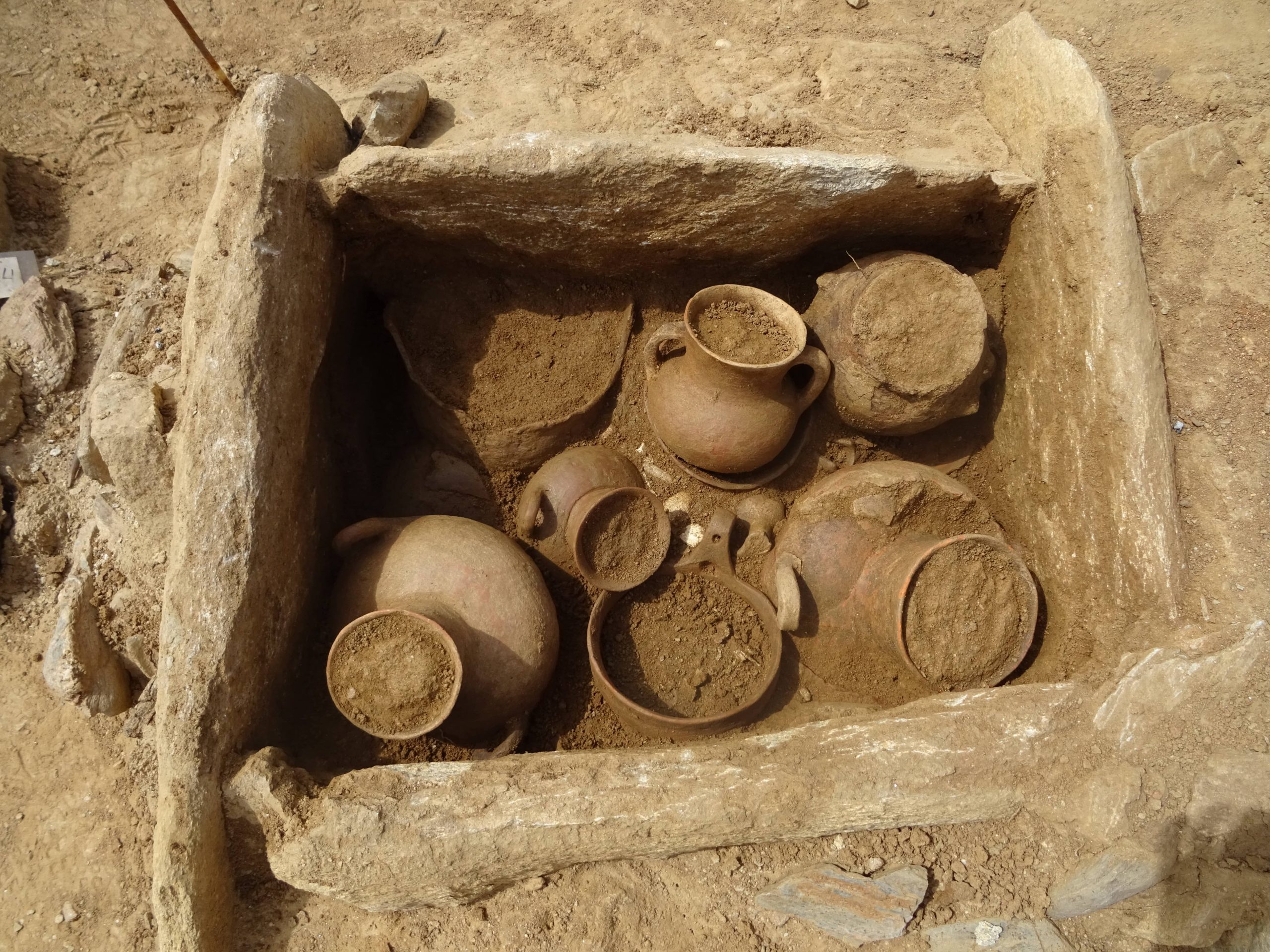Agios Ioannis, Nikiti
At “Agios Ioannis” in Nikiti, in the Municipality of Sithonia in Chalkidiki, in an area where a large-scale hotel complex is being developed, a cemetery has been excavated periodically from 2019 to date, spanning from the Early Iron Age to the Late Classical period (end of the 11th – 4th century BC). It is located near the coast and at a short distance from the islet Kastri, where remains of a settlement of the same period are found, possibly identified with the ancient Galepsus. It is one of the most impactful archaeological discoveries in recent years in the region of Chalkidiki, as it is a cemetery that relates to a long period of use and covers a wide geographical area, with an abundance of burials of different types reflecting social stratification, either lacking or being rich in grave goods.
So far, about 1.500 burials of various types have been identified and examined, such as enchytrismoi (inhumations in pithoi or amphorae), cist graves, burial thekai (niches), pit graves, sarcophagi, and cinerary urns, which testify to the widespread practice of cremation, mainly during the Early Iron Age. The graves vary in orientation, often cover each other and are arranged in overlapping layers without a clear overview of the chronological sequence. Mainly pottery vessels were interred with the deceased (some more elaborate, others less), jewelry – the vast majority being bronze – and a few small glass amphorisks and figurines were also unearthed.
A great percentage of the ceramic finds from the cemetery are handmade vessels of the Early Iron Age, possibly produced at local Chalcidian workshops, which include everyday vessels common in the Macedonian region (such as amphorae and amphorisks, tripod cooking pots, jugs with cutaway neck, cantharoid and phiale–shaped vessels, one-handled cups, etc). The presence of wheeled vessels is also significant, with painted decorations consisting of lattice patterns, wavy and horizontal bands, cross-hatched triangles, diagonal lines and concentric circles that stand out and date back to the Geometric period. These are mainly banquet vessels such as amphorae, trefoil-mouthed oinochoe, jugs, footed phialai and skyphoi. Lastly, several of the grave goods unearthed at Agios Ioannis, which originate from important Greek centers of production (Attic, Corinthian and Euboean workshops), date from the Archaic to the Classical period.









